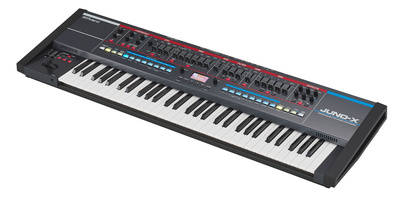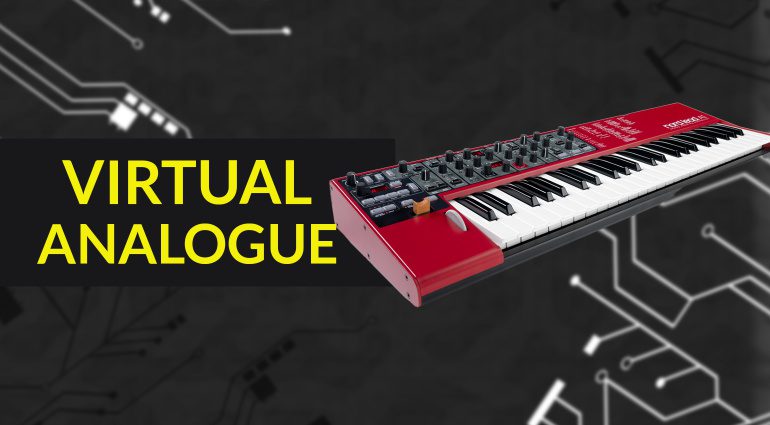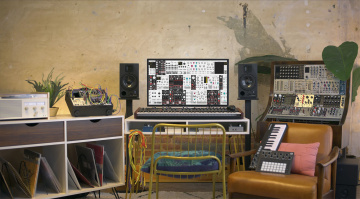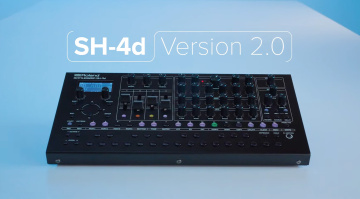Virtual Analogue Synthesis – Is it more than just a VST in a box?
Virtual analogue synths can offer more than traditional analogue.
Virtual analogue gets a bad rap but it has plenty to offer above and beyond traditional analogue. Let’s dive into the history of VA, look at where it excels and try to dispel some myths along the way.
Virtual Analogue Synthesis
My relationship with virtual analogue synthesis is likely similar to many of yours. A die-hard analogue purist for most of my life, I had no time for digital recreations of subtractive synthesis when perfectly good “real” synths already existed. How wrong could one guy be? Like a chef discovering a whole new drawer of spice, I have come to embrace virtual analogue. Not only for its synthesis possibilities but also its sound. And, thanks to everything ‘90s being popular again, we’re currently in the midst of a VA renaissance.

If you’re a VA convert, this is preaching to the (parallel filter-generated formant) choir. If you’re like I was, read on to find out what you may be missing as well as some recommended instruments to win you over to team VA.
The History of Virtual Analogue Synthesis: Let’s Get Physical
The history of virtual analogue synthesis begins, ironically, with physical modelling. In an effort to digitally recreate physical instruments and achieve ever-more realistic sounds, synthesizer engineers came full circle back to subtractive synthesis. By employing digital circuit modelling originally developed for circuit design, they could recreate the kinds of non-linearities found in electrical circuits.

The first dedicated virtual analogue synthesizer released was the Nord Lead in 1995. Clavia actually coined the term “virtual analogue” for the instrument, which featured a variety of hands-on control just like fully analogue synths. More importantly, it sounded incredible and heralded in a new age of synthesizers. The line continues to this day, with the Nord Lead A1 being the latest incarnation of the now classic.
Of course, you can’t talk about classic VA without mentioning Roland’s JP-8000. Released in 1996, the synth was immensely popular, with its stacked saw wave Supersaw becoming a dance music staple sound. Roland has surprisingly not yet recreated the JP-8000 in any form but Behringer does offer the JT-4000 Micro, a JP-8000-inspired mini synth.
Other classics include synths from Access like the Virus series and Novation, whose Supernova II remains a high-water mark.




Virtual Analogue Synthesis: Why Go Virtual?
It’s clear that VA has a strong history and track record but for those yet unsure of it, what makes VA a viable alternative to subtractive analogue? In a word: options. Freed from the physical limitations of components, it’s possible to add more without increasing cost. Want more than just two or three oscillator types? No problem. Need a variety of multiple filter types? Here you go.

One recent VA synth that epitomizes this is Korg’s KingKorg Neo. With 138 oscillator types and 18 different filter models, there are lots of things you can do with it that just wouldn’t be possible with traditional analogue. “I agree that there are many misconceptions about VA, and not all VA instruments are the same at all!” Korg’s Ibon Martinez Garcia told me when I asked him about VA. “I would say the KingKorg Neo’s beauty lies in the filter section and the ability to replicate many iconic sounds, all in one compact synth.”
More of VA

This is true of modulation sources as well. Another recent VA synth with lots of tweakable options is the Roland GAIA 2. “We know that a regular analogue synth has an attractive individual sound quality, but there are limitations about sound modulation due to analogue circuits,” the development team behind the GAIA 2 said. “More complicated circuits cause louder noise and distorted sound. Virtual analogue is constructed by digital signal processing. We think there are more experimental possibilities to produce new sounds since we can add new modulations and effects without losing sound quality.”
Another benefit of virtual analogue is that, because it’s digital, you aren’t stuck with just one type of synthesis. As with the KingKorg Neo, which also features digital single-cycle wave and PCM sample oscillators along with the VA ones, and GAIA 2 with its wavetable engine, Arturia’s MicroFreak and MiniFreak synths feature analogue modelling as just one of many digital synthesis types. Combining VA oscillators with other styles like FM is something just not possible with traditional analogue.






Virtual Analogue Synthesis: VST In A Box?
A common criticism of virtual analogue synthesizers is that they’re just VSTs in a box. This implies that they’re somehow not real instruments, or that since it’s digital you’re better off paying less for a piece of software to use in your DAW. There are many reasons to use a physical synthesizer rather than a soft synth, from sound quality to the tactile experience to plain personal choice.
Pretty much any digital instrument is a just specialized computer with dedicated controls running a piece of software anyway. A classic example of this is Korg’s powerful 2005 OASYS workstation. To run its many synthesis engines, which included virtual analogue along with PCM, sampling, physical modelling and wave sequencing, it used a Linux-based system with a 2.8GHz Pentium 4 CU and 40GB hard drive. Does this qualify as a VST in a box?

One company that often gets criticized for making VSTs in a box is Roland. With crossover between its ZEN-Core-powered software and physical instruments, such as with the Jupiter-X, the line sometimes gets blurred. “We’ve already produced (the) ZEN-Core sound engine, ACB plug-outs and Model Expansions that share between hardware products and software VST plugins,” Roland explained when I asked them about this. “But we designed them (as) hardware products first. Therefore, the tactile and playing feel was optimized for the hardware products. Of course, it depends on customer demand, but we recommend using our hardware products to get a fully optimized performance.”


VA Synthesis: Use It For The Sound
Ultimately, you should get a synthesizer because it sounds good. One of the first virtual analogue synths to really impress me was Roland’s Jupiter-Xm. That and then the Juno-X. Playing with them, I could feel my synthesis prejudices changing. Now I’m fully onboard with virtual synthesis and I’d love to expand my VA arsenal to include a Cobalt instrument from Modal as well. If you’re going to cook a meal, you want as many different spices at hand. Or at least I do.






What do you think of virtual analogue? Are there VA synths that you can’t get enough of? Let me know in the comments.
More Information
- All about synthesizers
- All about Roland
- All about Korg
- All about Yamaha
- All about Arturia
3 responses to “Virtual Analogue Synthesis – Is it more than just a VST in a box?”

 4,2 / 5,0 |
4,2 / 5,0 | 









You forgot the Yamaha AN1x from 1997. though comercially not successful soundwise one of the best
No mention of Kurzweil?
not mentioning alesis ION/micron ? almost whole range of novations ?